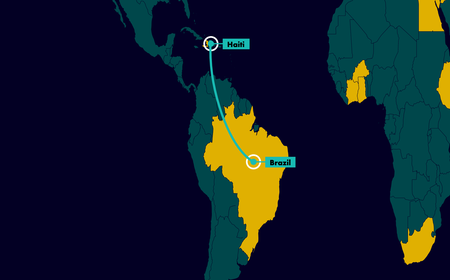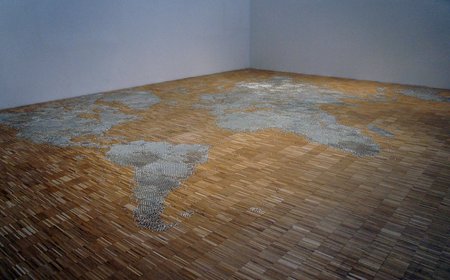We live in a social world dominated by representations of the peripheries — and of those who live in them — based on stigma and stereotypes. These stereotypes impede the formation of global and complex understandings of the social, economic, political and environmental realities of peripheries. As the Imaginary is fundamental to the foundation of the Real, the stereotypical representations of the peripheries, where cities’ most impoverished social groups reside, often influence public policies and private social investments. In addition to not meeting the real needs of these residents, such representations also serve to reinforce processes of material and symbolic appropriation, weakening collective strategies built by groups from the peripheries to exercise their right to the city.
The paradigm of absence
Stigmatization occurs in both dominant (hegemonic) and subjugated (non-hegemonic) countries within the current socio-economic and political order. Assumptions are often socio-centric, a concept in which representation, knowledge and practices are built from a specific social group, specially the dominant social groups. The examination of peripheries often based on models related to urbanistic theories and cultural/aesthetic assumptions determined by hegemonic social groups and dominant classes. These groups establish what is healthy, pleasant and appropriate for the functioning of the city based on the current ‘civilization’ model. They also define a particular concept of order, dictating appropriate forms of social behaviour and action.
Furthermore, there exists the promotion of the idea of absence, deficiency and homogeneity as elements of reductionist perceptions and hierarchical classifications of the peripheries in relation to other city spaces. Such a process emphasises what the periphery is not in comparison to an idealized model of the city based on colonial cultural and educational models. In the majority of cases, this is informed by the city’s wealthier populations. From this perspective, peripheries are seen as precarious spaces, and their subjects’/populations’ histories are denied. Their territories are considered illegitimate and their residents are exoticised or treated as second-class citizens (the quintessential non-civilization).
The peripheries, however, exist in relation to social institutions, in particular to the State and the Market. In this tense relationship, they are often represented as occupations that do not follow hegemonic models as defined by the State or the Market. When they are portrayed by these institutions, it is through perspectives of inferiority and precariousness, dismissing the identities, ingenuity and vast knowledge created within peripheries.
The paradigm of potency
There is an urgent need to overcome the reductionist, stereotypical and disqualifying view of the peripheries. Peripheries have a plurality of social, economic and cultural forms and dynamics which pose a challenge to their definition, therefore requiring broad frameworks of understanding to help guide more specific readings. While acknowledging that peripheries across the world are heterogeneous in their conditions, forms and functions, there are a number of common features among them. We affirm that each periphery constitutes an integral part of the city and composition of the urban fabric. Peripheries are central to the city, providing identity, meaning and humanity.
The periphery should not be defined negatively by what it is not or does not have in relation to socio-territorial dynamics or its physical distance from the hegemonic centre. Instead, peripheries must be recognized for their everyday practices that create the social fabric of the city, including their potential for invention, differentiated forms of occupation of space and counter-hegemonic communicative arrangements specific to each territory.
It is from the essential ability to adapt, from the recognition of periphery residents’ practices and the objective conditions of their social lives, that references must be established for what constitutes decent habitation. This starts from the necessary conditions for well-being and well-living. Such a process forms an integral and complex place, where groups engage through values, practices, experiences, memories and social position, affirming their identities as the strength to realise their own lives.
To understand the city in its plurality is to recognise the particularities of each territory and to affirm the citizenship and agency of all residents. Doing so requires the recognition of subjects from peripheries as the group most capable of narrating their own social and cultural practices, as well as their own symbols of resistance and reinvention —concrete forms of the affirmation and invention of rights, forms that must be wholly guaranteed by public policies. This constitutes a principle of full recognition of social life, democratically oriented and shaped, in the legitimate use of territory by popular groups.
***
This concept was discussed during a collective process on 17 April 2017 at an international meeting “What is the periphery, anyway?” at the Initiative from Instituto Maria e João Aleixo - IMJA. The text is adapted from A Manifesto from the Peripheries – Letter from Maré



